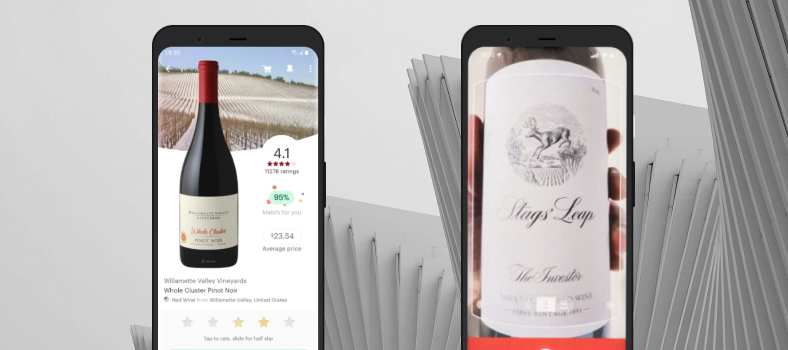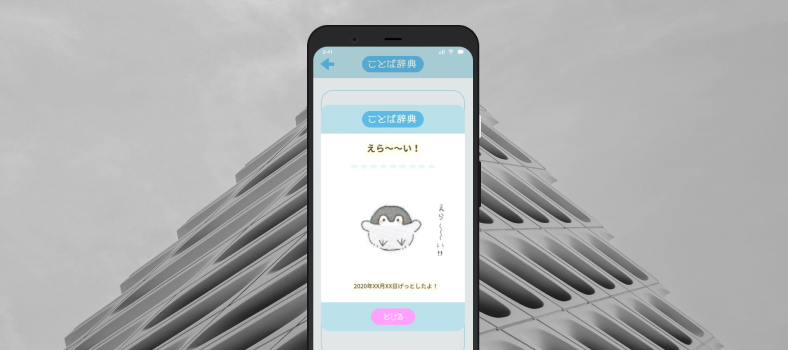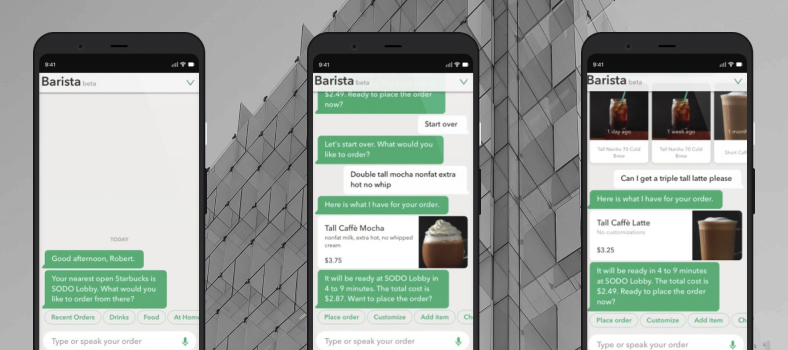Chatbots are rising! By 2027, one out of four businesses will employ them as a primary tool for customer service. It is easy to see why. Chatbots are always on the alert, able to manage multiple tasks at once. They are also efficient and friendly thanks to the latest innovations in generative AI. But a crucial question arises: how secure...
Not many mobile users realize that they have daily access to one of the most advanced technologies of recent years – artificial intelligence (AI). Meanwhile, it’s changing how people shop, listen to their favorite music, and complete daily chores.
Between 2021 and 2026, the AI mobile niche is projected to grow at a 25.1% CAGR and reach 22.08 billion USD. The main reason for this progress is that AI algorithms may be applied to any industry and significantly improve user experience.
But what exactly do we mean by AI in mobile app development? This post, with essential theory and market use cases, will give you a clear idea of the great transformations provoked by intelligent algorithms.
7 Features to Build AI-Powered Mobile Apps
One can hardly find more promising technologies than artificial intelligence and its subset, machine learning (ML). Let’s review the most common implementation scenarios by starting with recognition technology.
1. Image Recognition
Image recognition is a subcategory of machine vision that helps distinguish objects inside an image.
To train image recognition models, AI app developers use deep learning techniques. They prepare a data set to introduce objects to an image recognition system. Of course, machines see things differently: every image is a set of pixels for them. Developers apply feature extraction to present object patterns in the form of vectors so that machines could “see” objects properly.
Read also: Artificial intelligence in retail: What you should know
Interestingly, this technology mimics the mechanism of how animals detect objects but in a more computerized way.
Vivino
Available for iOS and Android users.
Vivino is a wine marketplace offering a wide assortment to 50 million users in 17 countries. Image recognition in this app is a part of the traditional online shopping experience, helping find a required item quickly.

Instead of typing in the search box, users can take a photo of the bottle that caught their attention right on the go and get detailed info with user ratings and reviews and then order the item – all in one place.
Other examples of apps with image recognition:
2. Facial Recognition
Facial recognition helps identify and verify a person’s face on an image or video, determine if a face image belongs to one or two different persons, and search for human faces in a collection of images.
Read also: How to use computer vision in your business
iOS and Android apps powered by facial recognition usually have security purposes. Face ID, for example, is one of the most commonly used applications of this technology now available on many smartphones by default.
Face recognition service for kindergartens
CHI Software created a face recognition app for one of our Japanese clients who provides photo services at schools, camps, kindergartens, and children’s events. Our task was to create an app helping preschool workers provide better reporting on the time that a child spends at the preschool facility.
The solution flow is the following:
- Registration: the child’s photo is uploaded to the system;
- Labeling: the solution compares detected face images with the ones in the database in real time;
- Reporting: parents get quick and detailed reports about the child’s condition.
Other examples of apps with facial recognition:
3. Voice Recognition
Voice AI for mobile phones is presented in the form of digital assistance. Using voice and speech recognition technologies, apps can understand what was said and how to react to a given command.
Read also: AI and voice recognition: Question of trust
Virtual assistance is not exactly new on the market, and the niche continues to grow. Customers realize how much time they save using only their voice, while people with disabilities can accomplish a wider range of actions with their smartphones.
HOUND
Available for iOS and Android users.
It is a complex mobile application for voice search and commands. It can tell the weather forecast, navigate a route, find a location on the map, start playing a Spotify playlist, and a lot more.

A special Houndify platform, combining automatic speech recognition (ASR) and natural language understanding (NLU), allows app creators to achieve high answer speed and accuracy.
Other examples of apps with voice recognition:
4. Chatbots
As competition on the mobile app market becomes more severe, companies are working hard to perfect existing customer experiences. An AI-based text assistant (Chat GPT use cases) available 24/7 is one of the vital workflow additions.
These smart instruments can process user queries and respond to typical questions with the help of natural language processing (NLP).
Read also: In what way you can use AI in travel & hospitality (with market examples)
NLP is a combination of natural language understanding (NLU) and natural language generation (NLG), allowing robots to have conversations with humans.
Mobile app with an interactive AI chatbot
Our company offers comprehensive ai and machine learning development services, delivering innovative solutions that harness the power of artificial intelligence to meet the diverse needs of our clients.
CHI Software created an entertaining app with a chatbot in the form of a funny character, an emperor penguin. Our client, a leading Japanese telecommunication company, aimed to add an entertaining aspect to routine processes and increase user engagement.
The app contains a home page, chat bar, vocabulary mode, and user profile. The more the penguin talks to users, the more new words it learns daily.

Key app characteristics:
- The penguin character moves depending on the time of the day and upon the user’s touch;
- The character uses AI technology implemented on the server side;
- Push notifications inform users about news and updates;
- To chat and view news, the user is redirected to the web view.
Other examples of apps with chatbots:
5. Automated Reasoning
Using automated reasoning, mobile applications solve current issues based on historical data. Something that happened some time ago automatically brings insights and solutions to this very moment.
Read also: Can AI improve customer experience? We discussed it with algorithms.
Any automated reasoning framework requires four parameters:
- Problem Domain: what issue exactly the system must solve;
- Language: what logic and programming language the system must use;
- Deduction calculus: what tools and processes the system must implement to analyze information;
- Resolution: how to control the overall flow.
Navigation systems are the most obvious examples of applying automated reasoning techniques.
Uber
This world-famous taxi service doesn’t require a detailed introduction, so we’ll look closer only at its automated reasoning feature.
The app’s algorithms process information about every ride to create optimal routes. Based on the collected data, users can check the distance to available drivers and the time their trip will take, considering the time of the day.

Uber’s automated reasoning
This is real-time reasoning based on previous experience, i.e., automated reasoning.
Other examples of apps with automated reasoning:
6. Neural Machine Translation
Using AI in mobile apps for translation seems an obvious solution. Every language is a large data set of words, so algorithms learn several of such data sets and how they correspond with each other. This type of translation is called neural machine translation.
Read also: How fintech benefits from AI innovations
Traditional machine translation interprets every word in a sentence ignoring the overall context. AI and ML in mobile app development enable understanding phrases, sentences, and even the tone of voice, which significantly improves translation quality.
Memsource Mobile
Available for iOS and Android users.
Memsource is a complex online platform powered by patented AI technology, helping managers and translators cope with their regular translation tasks. Memsource Mobile enables translation on the go, regardless of the user’s location.

As of September 2022, the platform supports 500+ languages and 50+ file types and covers the niches of marketing content, software & apps, documentation, e-commerce websites, and games.
Other examples of apps with neural machine translation:
7. Advanced Personalization
By advanced personalization, we mean multifactor examining user behavior (based on a history of orders, location, account settings, etc.), providing a unique and engaging in-app experience.
Read also: The best event and conference app: does it exist, and how to build one?
According to McKinsey, 76% of consumers would opt for brands that prioritize personalized messaging and offerings. It’s highly likely that AI personalization will soon become the first choice for big and mid-sized businesses.
Starbucks
Available for iOS and Android users.
Starbucks, among other global brands (Spotify, Amazon, Instagram, Netflix, etc.), actively uses high-end personalization features. Customers feel like the app knows and understands them, so they easily get hooked.

Starbucks personalization feature
To make it possible, Starbucks applies behavioral segmentation. As the name suggests, the app studies user behavior patterns and habits to deliver customer-centered offerings, hitting straight to the point.
Moreover, this approach allows the company to troubleshoot any user experience gaps and optimize the workflow in the shortest terms.
Other examples of apps with advanced personalization:
Good to Know: How AI Revolutionizes the Mobile Development Process
AI transformation starts long before the user downloads an app on their smartphone. The change touches on the development processes from the very beginning, that is, from the requirement management.
Read also: What mobile development trends to consider in 2023?
Here’s a short overview of the AI-based development process:
- Requirement management. To improve the working process and reduce risks, AI promises to deliver thoroughly developed software models powered by NLP. Such tools as Infosys help transcribe data inputs (i.e., initial project details) into action plans;
- UI/UX design. Such AI tools as AWS Machine Learning, Azure AI, and IBM Watson help designers derive user journey details to build exceptional user experiences;
- Artificial intelligence can be helpful in automatic code generation as well. Among such advanced tools are SourceAI, Tabnine, OpenAI Codex, and other similar platforms;
- Software testing. This part of the process involves a lot of repeated actions and, thus, more time spent on routine operations. Even though automated testing has already become common for many teams, technologies go even further by offering AI software testing: Testim, Saucelabs, Perfecto Scriptless, etc.;
- Using artificial intelligence is the best-case scenario for maintaining product quality in every update. Examples of AI tools for deployment include Digital.ai Deploy and Oracle Autonomous Database.
Final Thoughts
Using AI for mobile apps is a new era of user experience and market transformations. Now we can give commands to our phones, conduct a visual search, get extra-personalized messages, and receive instant replies from robots.
Even though these examples are innovative, they are already common in many industries. We know and love Netflix and Spotify for their amazing recommendation systems, which wouldn’t have existed without AI algorithms.
And that’s not all. The mobile development process is changing thanks to advanced automation offered by… Yes, intelligent algorithms.
AI for mobile apps is surely (and not slowly) becoming one of the go-to choices for app creators and stakeholders. How far will it take us in five years? We’ll see. For now, we’re doing our best to take full advantage of these innovative technologies.

Polina is a curious writer who strongly believes in the power of quality content. She loves telling stories about trending innovations and making them understandable for the reader. Her favorite subjects include AI, AR, VR, IoT, design, and management.